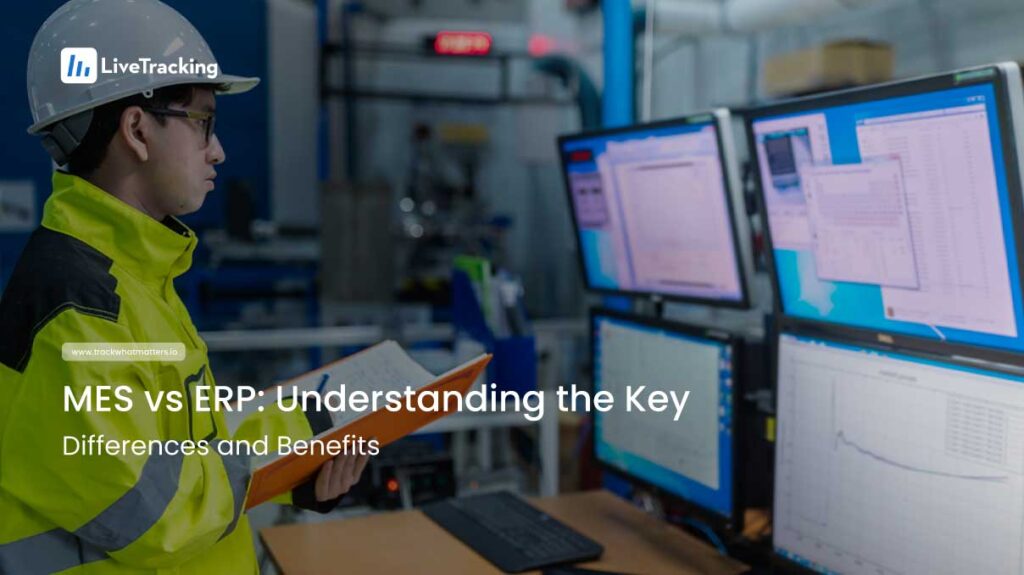Software project management software Choosing the Right System: MES, ERP, or Both?
Deciding between MES, ERP, or a combination of both systems depends on the specific needs and goals of an organization.
Understanding the differences between Manufacturing Execution Systems (MES) and Enterprise Resource Planning (ERP) systems is crucial for organizations aiming to enhance their operational efficiency. Both systems play vital roles in modern manufacturing and business processes, yet they serve distinct purposes and offer unique benefits.

To streamline operations and improve efficiency, many businesses adopt Software Project Management Software that integrates seamlessly with MES and ERP systems. This software helps organizations manage complex projects, track production, allocate resources efficiently, and ensure smooth collaboration across teams.
Understanding the differences between Manufacturing Execution Systems (MES) and Enterprise Resource Planning (ERP) systems is crucial for organizations aiming to enhance their operational efficiency. Both systems play vital roles in modern manufacturing and business processes, yet they serve distinct purposes and offer unique benefits. This article delves into the definitions, functionalities, and applications of MES and ERP, helping businesses make informed decisions about which system best suits their needs.
A Manufacturing Execution System (MES) is a software solution designed to monitor, control, and optimize production processes on the shop floor. It provides real-time data about manufacturing operations, enabling managers to track production schedules, manage resources, and ensure quality control. MES solutions typically integrate with machinery and equipment, allowing for seamless data collection and analysis. This real-time visibility helps in identifying bottlenecks, reducing downtime, and improving overall efficiency. Additionally, MES can facilitate compliance with industry standards and regulations by maintaining accurate records of production processes, thereby ensuring that manufacturers meet quality and safety requirements.
On the other hand, an Enterprise Resource Planning (ERP) system is a comprehensive software platform that integrates various business processes across an organization. ERP systems manage functions such as finance, human resources, supply chain, and customer relationship management. By centralizing data and automating processes, ERP systems enhance visibility and streamline operations across departments. This integration not only improves data accuracy but also fosters collaboration among different teams, allowing for better decision-making and resource allocation. Furthermore, modern ERP systems often include advanced analytics and reporting tools that provide insights into business performance, enabling organizations to adapt quickly to market changes and customer demands.
In the context of manufacturing, the interplay between MES and ERP is crucial for achieving operational excellence. While MES focuses on the execution of manufacturing processes, ERP provides a broader view of the entire organization. For instance, data from the MES can feed into the ERP system, allowing for more accurate forecasting and inventory management. This synergy helps manufacturers optimize their supply chain, reduce lead times, and improve customer satisfaction. Moreover, as industries increasingly adopt smart manufacturing practices and the Internet of Things (IoT), the integration of MES and ERP becomes even more vital, enabling organizations to leverage data from connected devices for enhanced performance and innovation.
Moreover, the implementation of these systems can significantly impact a company’s bottom line. Companies that effectively use MES and ERP together can see reductions in operational costs, improved product quality, and faster time-to-market for new products. As businesses continue to face challenges such as fluctuating demand and supply chain disruptions, the ability to quickly adapt and respond to these changes becomes a competitive advantage. Thus, investing in a robust MES and ERP infrastructure is not just about keeping pace with technology; it’s about positioning the organization for long-term success in an ever-evolving marketplace.
While both MES and ERP systems aim to improve efficiency and productivity, their functionalities differ significantly. MES focuses primarily on the manufacturing process, providing tools for real-time monitoring, production scheduling, and quality assurance. It allows manufacturers to respond swiftly to production issues, optimize workflows, and ensure compliance with industry standards. By utilizing MES, companies can track key performance indicators (KPIs) on the shop floor, enabling them to identify bottlenecks and implement corrective actions promptly. This level of granularity helps in maintaining high standards of quality control and minimizing waste, ultimately contributing to a leaner manufacturing process.
In contrast, ERP systems encompass a broader range of business functions. They facilitate resource planning, financial management, and supply chain logistics. ERP systems provide insights into overall business performance, enabling organizations to make strategic decisions based on comprehensive data analysis. With integrated modules that cover everything from human resources to customer relationship management, ERP systems ensure that all departments are aligned and working towards common goals. While MES is concerned with the “how” of production, ERP addresses the “what” and “why” of business operations, offering a holistic view that helps organizations adapt to market changes and customer demands more effectively.
Furthermore, the integration of MES with ERP systems can lead to even greater efficiencies. By connecting the real-time data from the shop floor with the strategic insights from the ERP, businesses can achieve a seamless flow of information. This synergy allows for more accurate forecasting, better inventory management, and improved production planning. For instance, if an MES detects a slowdown in production due to machine malfunction, this information can be relayed to the ERP system, which can then adjust inventory levels and procurement schedules accordingly. This interconnectedness not only enhances operational agility but also fosters a culture of continuous improvement across the organization.
Moreover, the implementation of both MES and ERP systems can significantly enhance data visibility across different levels of the organization. With MES providing granular data on production processes and ERP offering insights into broader business metrics, stakeholders at all levels can access the information they need to make informed decisions. This transparency is crucial in today’s fast-paced business environment, where rapid decision-making can be the difference between success and failure. By leveraging the strengths of both systems, organizations can create a more resilient and responsive operational framework that is better equipped to handle the complexities of modern manufacturing and business landscapes.
Integrating MES and ERP systems can lead to significant improvements in operational efficiency. When these systems work in tandem, they create a seamless flow of information between the shop floor and management. For instance, MES can provide real-time production data to the ERP system, which can then use this information for demand forecasting, inventory management, and financial planning.
This integration allows for better decision-making, as managers have access to real-time data from both the manufacturing and business sides of the organization. Additionally, it helps in aligning production schedules with supply chain logistics, reducing lead times, and improving customer satisfaction. The synergy between MES and ERP not only enhances productivity but also enables organizations to respond more effectively to market changes.
Moreover, the collaboration between MES and ERP can significantly enhance quality control processes. By continuously monitoring production metrics and integrating them with quality assurance data, companies can identify defects and inefficiencies in real time. This proactive approach not only minimizes waste but also ensures that products meet the required standards before they reach the customer. Furthermore, the ability to trace materials and processes through the MES allows for quick identification of issues, enabling faster corrective actions and minimizing the risk of recalls.
In addition to operational benefits, the integration of MES and ERP fosters a culture of continuous improvement within organizations. With access to comprehensive analytics and performance metrics, teams can identify trends and areas for enhancement. This data-driven approach encourages a mindset focused on innovation and efficiency, as employees are empowered to suggest changes based on real insights rather than assumptions. As a result, businesses can cultivate a more agile and responsive operational framework, ultimately positioning themselves as leaders in their respective industries.

1. What is Software Project Management Software?
Software Project Management Software is a digital tool designed to streamline project planning, execution, and monitoring, ensuring efficiency and real-time collaboration.
2. How does Software Project Management Software integrate with MES and ERP?
It connects real-time production data from MES with strategic business insights from ERP, improving decision-making and resource allocation.
3. What are the key benefits of using Software Project Management Software?
Benefits include increased productivity, better resource management, reduced project delays, and enhanced collaboration across teams.
4. Is Software Project Management Software suitable for all industries?
Yes, it is beneficial for industries such as manufacturing, IT, healthcare, and logistics that require streamlined project tracking and collaboration.
5. What factors should I consider when choosing the right Software Project Management Software?
Look for ease of use, scalability, integration capabilities, security features, and cost-effectiveness when selecting a software solution.
Share
Table of Content
Stay Up-to-Date
Get LiveTracking news in your inbox.
Error: Contact form not found.
By submitting this form I have read and acknowledged the Privacy Policy.
The latest industry news, interviews, technologies, and resources.
Deciding between MES, ERP, or a combination of both systems depends on the specific needs and goals of an organization.